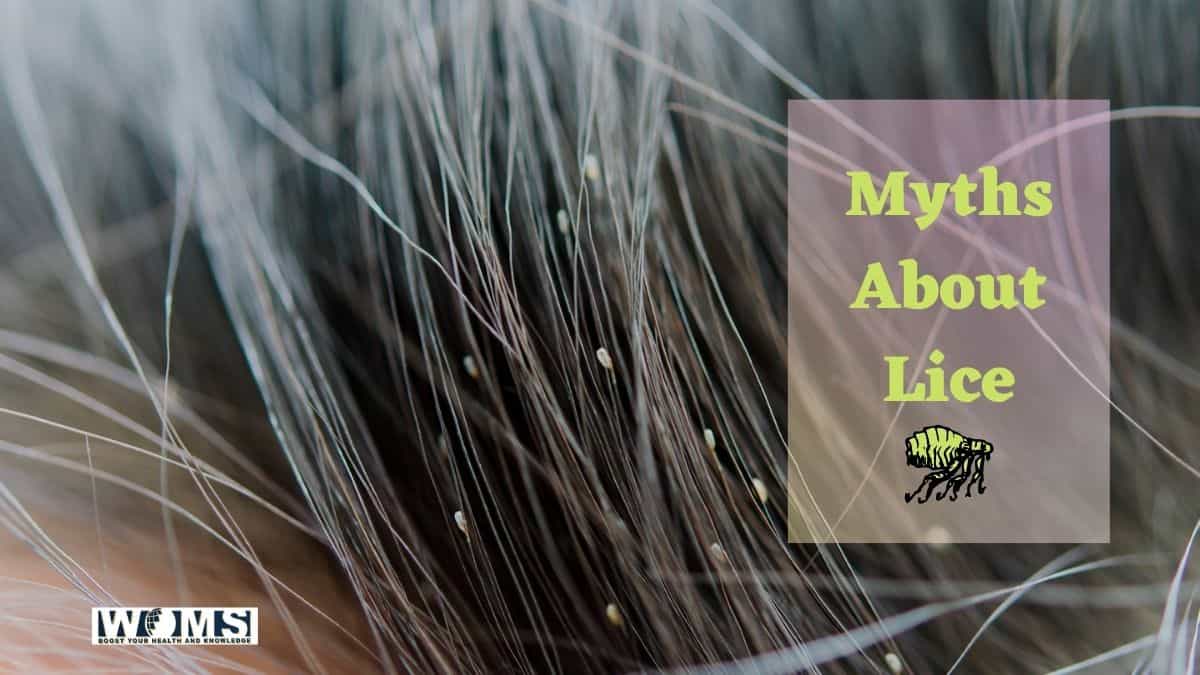Lice: Myths About it

Each parent’s worst fear is lice. Is it, nevertheless, necessary to feel afraid? Despite so numerous falsehoods regarding lice, researchers aim to clear the air by debunking the most common misconceptions regarding the creepy crawly bugs, including who receives lice, how to get free of them, and far more.
Lice are tiny, yet in large enough populations, they can create major difficulties. The underlying issue is that several individuals accept popular lice myths, which results in inadequate treatment and, in certain cases, aggravation of the condition.
There Are Certain Myths About Lice
- Individuals have lice if their scalp itches. One of the greatest prevalent signs of head lice is an itchy scalp, although there are numerous possible explanations for this problem. Some frequent causes include skin problems and seborrheic dermatitis (commonly described as dandruff).
- Head lice prefer filthy hair. Is it better to have filthy hair or clean hair if you have head lice? A head louse has just one choice in life, which is a hot living habitat. Head lice don’t care if one’s hair is dirty or tidy, and cleansing one’s hair won’t eliminate the head lice or nits. Upon cleaning, a head louse could skillfully stick to hair follicles, and nit eggs get attached toward the hair strand. Head lice have nothing to relate to hygienic practices or cleaning. It doesn’t matter if you’re rich, poor, neat, or unclean. Lice could be seen in almost any environment,
- Lice do not indicate poor sanitation. In reality, lice are often simply more likely to be making a dwelling on the newly cleaned scalp than they are on the dirty scalp. Lice are just as likely to settle in newly shampooed hair as they are in unwashed tresses. The appearance of nits indicates that there is a current outbreak.
- A living louse is the only way to tell if you have head lice. Nits are the empty husks of released louse eggs, and they’re frequently mistaken for dandruff. As a consequence, the existence of nits simply indicates the existence of a previous infection with tight or might not be present now. What do head lice sound exactly, though? Mature lice have been roughly the diameter of a sesame kernel and have a fast movement. They may be hard to identify as a result of this. Knowing wherever they choose to conceal, this is commonly wherever they deposit their egg, might benefit. The nape of the neck, temples, and behind the ears are all top destinations.
- Lice can acquire and transfer illness in humans. Lice on the scalp will not transmit the infection. Although parasites are linked to the much bigger body louse, which has been proven to transmit diseases such as typhus and trench fever, head lice have never been shown to transmit viral infections. A lice outbreak’s sole possible safety hazard will be the chance of subsequent skin disease through scraping.
- The simplest and usually popular solution is to use lotions. Remedies were no longer limited to traditional insecticides, creams, or sprays that required countless periods of encounter with head lice to be efficient. Head lice solutions have progressed and are already obtainable in a range of methods to meet the requirements of diverse individuals and hair kinds and styles, including shampoos, lotions, and mice.
- Head lice do not “jump” or “fly” from one individual to another because they lack wings. They also don’t migrate from one location to the next. Nevertheless, since their legs are quite well suited for crawling, insects will crawl extremely swiftly. And, because of the hook-like claws on their legs, they continue to stick to a child’s scalp for a long time. Head lice are unable to hop. Head lice are unable to fly. The head lice are crawling. They’re disseminated by coming into physical interaction with someone who has them. This is the greatest typical method of obtaining them. It’s rare to catch head lice through handling something like cushions, bags, or other commonplace items.
- To be effective, all head lice remedies involve two administrations. Because previous insecticide remedies were less successful at destroying lice eggs, it was suggested that two procedures be employed. Because of the pattern of the head lice’s entire lifespan, the therapies were separated by a week. Because lice eggs hatch in around 7 days, the treatments will focus on the freshly hatched lice. Nevertheless, there are insecticide-free alternative treatments now which are successful with just one administration.
- To get rid of them, you’ll need to use pesticides. There are several pesticide-based therapies obtainable, both over the counter and via prescriptions. However, they might not be the safest alternative. Several infestations in the United States and various regions of the globe have acquired tolerance to over-the-counter lice therapies that use specific pesticides, termed “super lice.”
- Lice on the scalp can survive for a prolonged period. Since they don’t even have a host organism to feed on, those annoying little parasites do not even survive for long. Head lice cannot live without food for more than one to two days, and their usual lifecycle is up to 30 days.
- Incorrect information, misunderstandings, and mishandling abound when it comes to detecting and treating head lice. Certain methods include a variety of efficient head lice therapies that have been clinically proven to destroy lice and eggs, allowing you to select the most appropriate potential cure for oneself as well as one’s household. If patients require additional assistance, the most appropriate medical practitioner with whom one can discuss head lice is found in someone’s local clinic.
Conclusion
There’s no need to be discouraged if we’re struggling with a persistent lice infection that we can’t manage to eradicate. The remedy may be as accessible as one’s local lice health clinic.
FAQs
Are lice beneficial to one’s hair?
Head lice are parasites that dwell in the hair and feed on the blood from one’s scalp. Their bites could itch and are disgusting to several individuals. Apart from that, they are rather safe and do not transmit any infections.
What is the most common reason for head lice?
Head lice infestations are more common in youngsters and are caused by the direct spread of lice through one person’s hair to someone else’s hair. A head lice outbreak isn’t a symptom of a lack of sanitation or a filthy living condition. Head lice do not transmit bacterial or viral infections.




